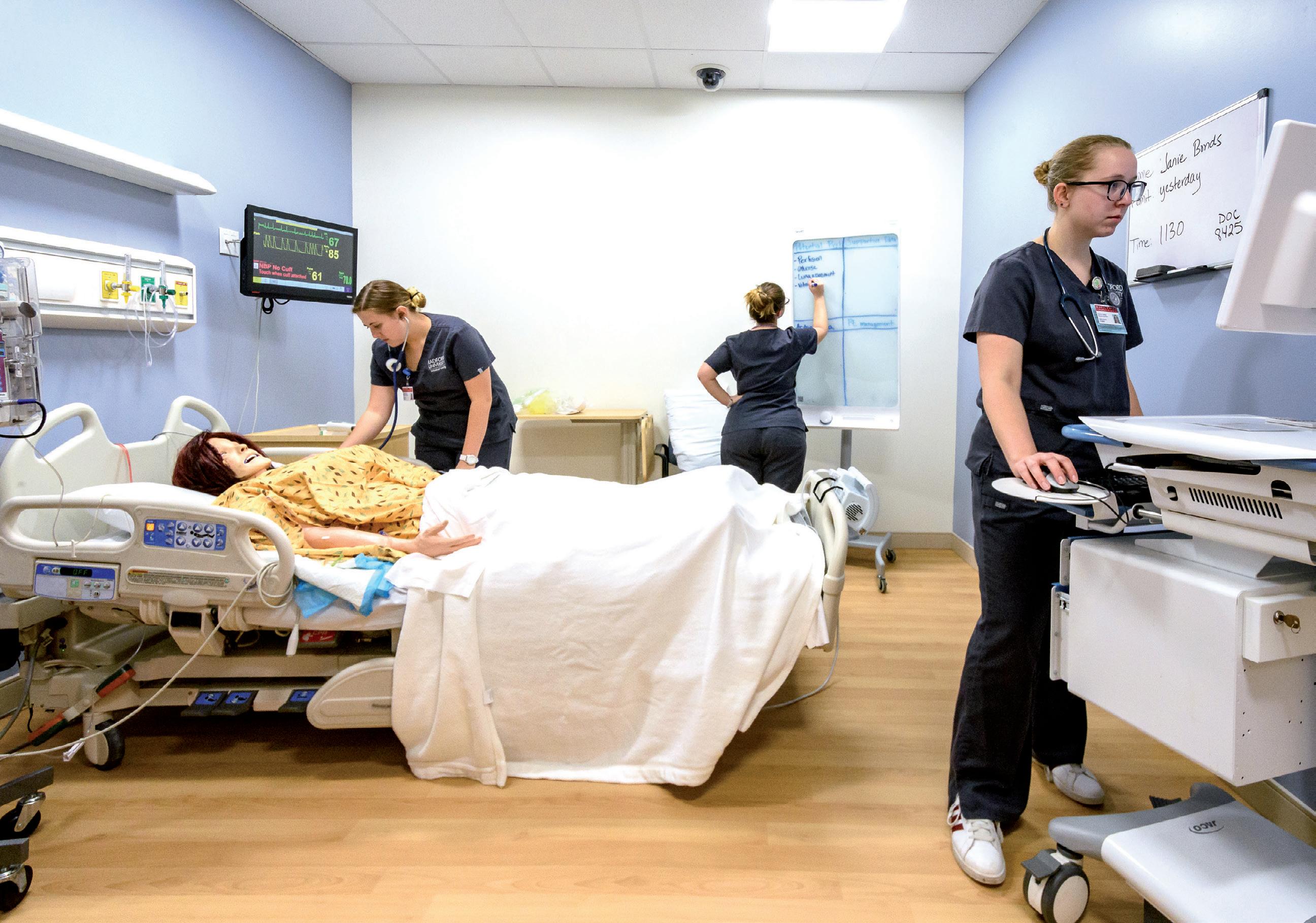
2 minute read
Expanded Nursing Simulation Center Returns to Campus
The Radford Clinical Simulation Center (CSC), now in its new home on the third floor of Cook Hall, has doubled in size and added capabilities that replicate the modern healthcare environment.
Radford University School of Nursing students now have increasingly immersive practical experiences in additional hospital rooms, exam rooms and interview rooms, and they debrief in larger, technology-rich spaces that are supported by a state-of-the-art computer infrastructure.
“The expansion of the CSC represents an exciting opportunity for the nursing program,” said School of Nursing Interim Director Iris Mullins, Ph.D. “The relocation and expansion bring efficiencies and synergies that enrich nursing students with virtual reality experiences that are important complements to their classroom and clinical experiences.”
The expansion marks the first-ever renovation of Radford’s CSC, formerly located in the Radford University Corporate Park, since its initial opening in 2006. The Radford CSC now includes two “wings” — a wing simulating the hospital environment with rooms devoted to obstetric, pediatric and medical/surgical care and a wing simulating a healthcare clinic and doctors’ offices.

The Cook Hall CSC also includes an apartment in which students work with patients, or actors who portray patients, to replicate the home healthcare environment.
“We can now provide more state-of-the-art sim education with faculty who are simulation experts,” said Cindy Cunningham ’88, M.S. ’97, CSC director. “Learning takes place in debriefing, and we have ample space and technology by which our students can review their work on their own and with faculty, plus an even more realistic environment.”
“The new nurse call system and BD Pyxis MedStations are typical of technology found in most acute care facilities and nursing homes. This technology makes our replication of a nurse’s environment even richer,” Cunningham said.
The BD Pyxis MedStation is an automated medication dispensing system that the CSC nursing students will work with as they transition into their clinical rotations and into practice. A nurse call system enables communication between patients and nurses to enhance quality of care.
Cunningham emphasized, “We can now provide our students with invaluable practical experiences that build their confidence, proficiency and clinical judgment in a safe environment.”










